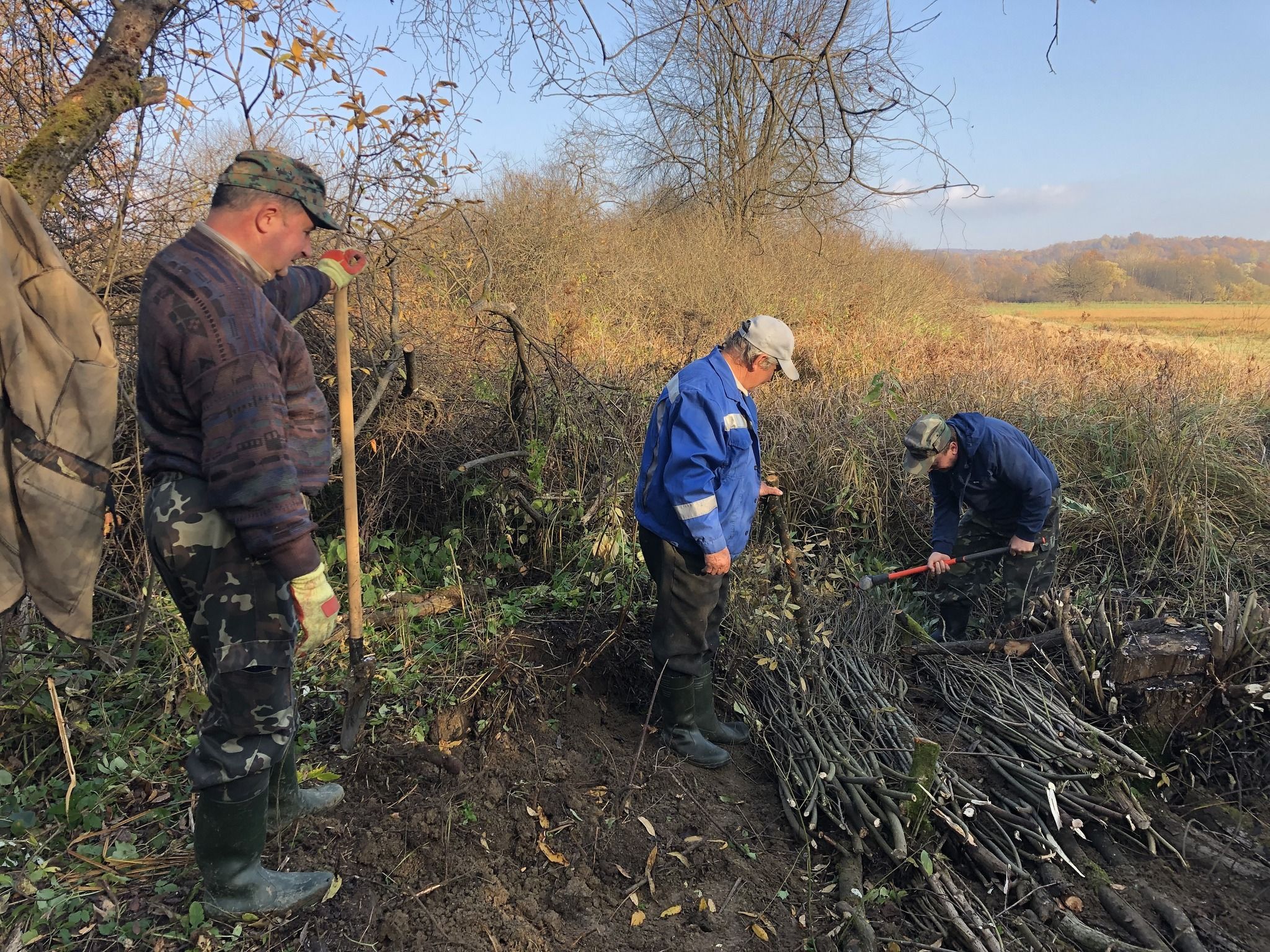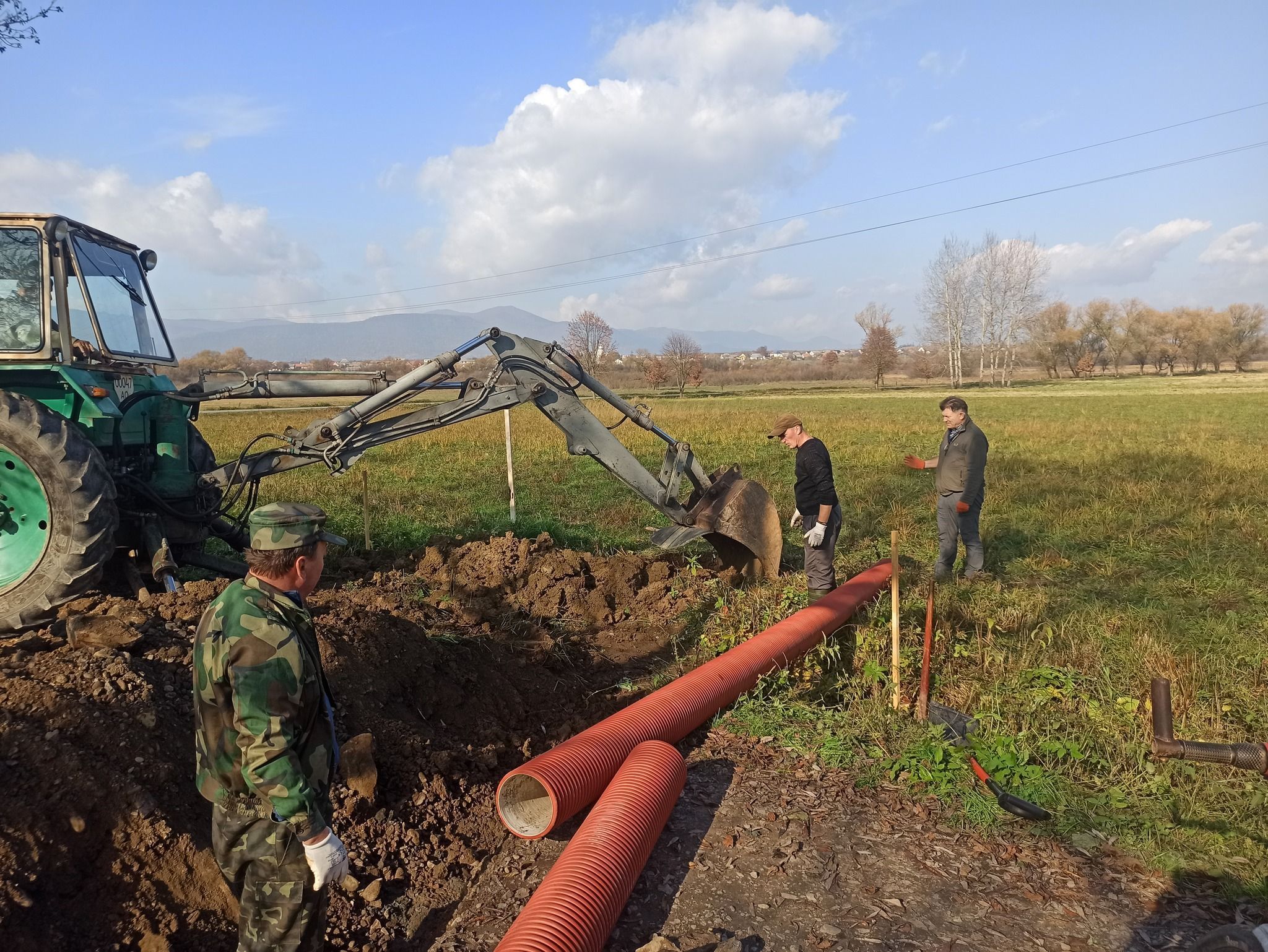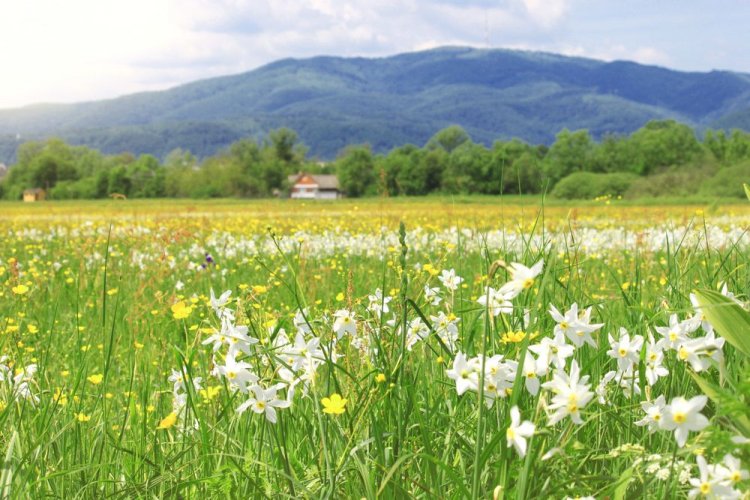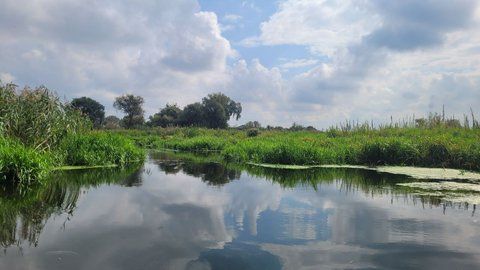In Transcarpathia, the public organization "Danube-Carpathian Program" (DCP) together with the Carpathian Biosphere Reserve (CBR) began to flood the "Valley of Narcissus" protected area.
The project "Save the Narcissus Valley" will help protect the Valley from droughts caused by climate change, the DPC reports on Facebook.
Scientists and activists brought water from the canal to the most recognizable tourist site of the Narcissus Valley. And they also built an experimental dam on the old reclamation canal, which is as similar as possible in its construction to a natural beaver dam, made of branches and clay.



In the message, it was noted that in 2022, 2 hydrotechnical structures have already been installed to maintain the groundwater level in wet meadows and preserve the habitat of narrow-leaved narcissus and other rare species of plants and animals.
"These works are designed to retain as much water as possible during the wet season to support narrow-leaved narcissus meadows during the dry season. This will help to restore the water regime of the most valuable parts of the Valley," the authors explained.
To save Narcissus Valley they also:
- supported the mulching of 20 hectares of territory, where sedges and the growth of tree and shrub species had grown (especially difficult areas for mowing);
- bought 2 Stihl brush cutters for mowing shrubs and young trees. CBR workers mowed such plots on a total area of 3 hectares.
The report noted that the retained water stimulated green cover in the "Valley of Narcissus" during the summer heat and the need for local people to mow grass for livestock, as other areas were completely dry. In total, more than 70 hectares of territory were mowed, which stimulated the restoration of settlements.
"The efficiency of the system of hydrotechnical structures could already be assessed during the abnormal heat this summer in Transcarpathia. Then, near the Narcissus Valley, even the Khustets river bed dried up. Instead, the canal in the Valley itself, where hydrotechnical structures (dams) were installed, held water. In total, 8 hydrotechnical structures were built in the valley over the course of 12 years. The need is much greater," the authors emphasized.
The project "Save the Narcissus Valley" is implemented with the support of EOCA European Outdoor Conservation Association and ORTOVOX. As part of the project, it is planned to continue the construction of hydraulic structures, support grazing and involve volunteers.
As EcoPolitic reported before, Transcarpathia risks turning into a "second Crimea", because the region experiences droughts, a minimum of moisture, high air temperatures and a lack of water.





